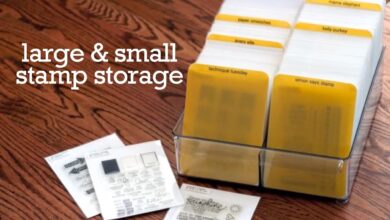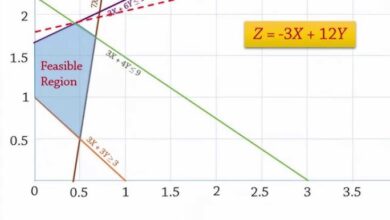Exploring the Different Types of E-Liquids: VG vs. PG, Nicotine, and More

The e-cigarette industry has evolved significantly over the past decade, with vaping becoming an alternative for many smokers looking to quit traditional tobacco products. A key component of vaping is e-liquid, also known as vape juice or e-juice. E-liquids come in various formulations, each designed to provide a different vaping experience. Understanding the differences between the types of e-liquids can be essential for those looking to tailor their vaping experience to their preferences. In this essay, we will explore the different types of e-liquids, focusing on their base ingredients — VG (Vegetable Glycerin) and PG (Propylene Glycol), the role of nicotine, and other factors like flavorings and additives.
VG vs. PG: The Core Components
At the heart of any e-liquid are two primary components: Vegetable Glycerin (VG) and Propylene Glycol (PG). These ingredients are responsible for the vapor production and fluum Tornado 12000 the overall texture and experience of vaping.
Vegetable Glycerin (VG) is a thick, viscous liquid derived from plant oils. It is known for its ability to produce large, dense clouds of vapor, which is why it is often preferred by those who enjoy cloud chasing. VG tends to create a smoother vaping experience with a slight sweetness that can enhance the flavor of the e-liquid. However, because VG is thick, it can cause issues in some vape devices, such as clogged coils or reduced wicking efficiency.
Propylene Glycol (PG), on the other hand, is a much thinner liquid. It produces less vapor than VG, but it is excellent at carrying flavors. PG is also known for providing a stronger throat hit, which mimics the sensation of smoking traditional cigarettes. This makes it a popular choice for those transitioning from smoking to vaping. PG is less viscous than VG, so it works well in a wider range of vape devices. Some users, however, may be sensitive or allergic to PG, experiencing mild irritation or dryness in the throat.
VG/PG Ratios
One of the most important considerations when choosing an e-liquid is the VG/PG ratio. E-liquids are often labeled with a ratio, such as 70/30 VG/PG or 50/50 VG/PG, indicating the proportion of each ingredient in the formula.
A higher VG ratio (such as 70/30 or 80/20 VG/PG) will produce thicker vapor clouds and provide a smoother vaping experience, making it a favorite for those who prioritize cloud production. However, the flavor intensity might be slightly diminished compared to PG-heavy e-liquids.
Conversely, a higher PG ratio (such as 50/50 or 60/40 PG/VG) is ideal for those who want stronger flavors and a more noticeable throat hit. These e-liquids are also compatible with a wider range of vaping devices, particularly smaller, less powerful bang ones like pod systems.
Nicotine Levels: Customizing Your Vaping Experience
Another critical aspect of e-liquids is the nicotine content. Nicotine is the addictive substance found in traditional cigarettes, and many vapers use it as a way to gradually reduce their nicotine intake over time. E-liquids come in a wide range of nicotine concentrations, typically measured in milligrams per milliliter (mg/mL) or as a percentage.
For those who are new to vaping or transitioning from smoking, high nicotine levels (18-24 mg/mL) may be necessary to satisfy cravings. These e-liquids provide a stronger throat hit and a more intense nicotine sensation, similar to smoking.
Moderate nicotine levels (6-12 mg/mL) are suitable for users who want a balance between flavor and nicotine satisfaction. These levels are ideal for those who have already reduced their smoking habits or for moderate vapers who want a milder experience.
For vapers who prefer a low nicotine level or want to enjoy vaping without the addictive substance, nicotine-free e-liquids (0 mg/mL) are also available. These are often chosen by hobbyist vapers who enjoy the act of vaping for its flavor and cloud production without the need for nicotine.
Nicotine Salts vs. Freebase Nicotine
In addition to the nicotine concentration, the type of nicotine used in e-liquids can impact the vaping experience. There are two primary forms: freebase nicotine and nicotine salts.
Freebase nicotine is the most common form found in traditional e-liquids. It provides a strong throat hit and is available in various concentrations, making it suitable for both high and low nicotine users.
Nicotine salts, on the other hand, are a newer formulation designed to deliver nicotine more efficiently and smoothly. Nicotine salts are absorbed by the body more quickly than freebase nicotine, providing faster satisfaction without the harsh throat hit associated with higher nicotine levels. This makes nicotine salts ideal for vapers who need higher nicotine concentrations (25-50 mg/mL) but prefer a smoother experience.
Flavorings and Additives
One of the major draws of vaping is the wide variety of flavors available. E-liquids can be found in countless flavor profiles, including fruity, dessert, menthol, tobacco, and candy flavors. The flavoring used in e-liquids is typically food-grade and safe for consumption, although individual flavor preferences vary greatly.
In addition to flavorings, some e-liquids may contain additives like cooling agents (to enhance menthol or mint flavors), sweeteners (to boost the sweetness of certain flavors), or even caffeine or CBD for additional effects. While these additives can enhance the vaping experience, it is essential to be mindful of their presence and potential side effects.
Conclusion
E-liquids offer a customizable and diverse vaping experience, catering to a wide range of preferences. Whether you’re looking for dense vapor clouds, strong flavors, or nicotine satisfaction, understanding the differences between VG, PG, nicotine levels, and other additives is key to finding the perfect e-liquid for your needs. As the vaping industry continues to evolve, so too will the options available to consumers, ensuring that there is a vape juice for every type of vaper.



